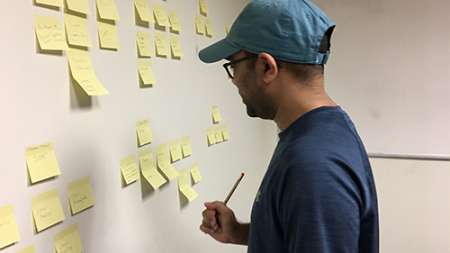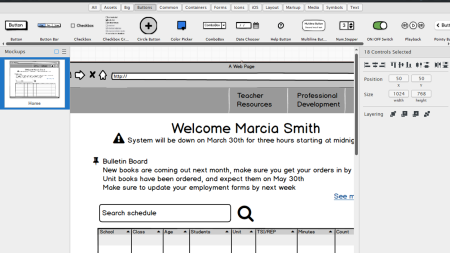
Related Class
UX Prototyping Tools Expand Their Use
- Published on

UX Prototyping Tools Offer Expanded Value to Businesses
User Experience (UX) prototyping allows product managers, business analysts, and others creating apps to get feedback on their app ideas without needing to code the application before it can be reviewed. Prototypes are samples of what an application will look like, and demonstrate the flow from one screen to another. They do not provide a full range of functionality, and provide a discussion point for feedback about concepts, designs, and interactions a user will eventually need to make once the app is coded. By obtaining early stage feedback, development time is not wasted on early versions that may not meet the needs of a business or customer. Early concerns and feedback can be provided in the prototyping stage, allowing developers to focus on creating a more refined application when coding is started.
Prototyping tools for user experience designers have evolved considerably over the past several years. Not too long ago UX designers needed to be content with sharing designs using tools such as PowerPoint and walking prospective users through each screen as if watching a slide deck. The introduction of dedicated prototyping tools changed this, as players such as Balsamiq made possible to easily create mock-ups to convey UX design ideas and gather feedback. Even Microsoft has created UX design tools with Sketchflow to help designers wireframe and prototype designs for the Windows platform. A single design, sharing, and collaboration process or application has yet to evolve, and a new generation of UX design tools are starting to arrive. These offer increased collaboration, feedback, and tracking in the design process. One of these next generation tools for UX designers is InVision.
InVision is a UX prototyping tool that takes a different approach than most existing prototyping apps. It allows Photoshop mock-ups to be imported into a design for testing. Within InVision you can then add interactive elements such as buttons and form fields and use it to solicit feedback. InVision makes it easy to collect notes as annotations on the design of your app or web page. In our testing we’ve found InVision to be better suited for collaboration and review of existing designs. There is still a need for UX wireframing tools such as Balsamiq Mockups, and InVision fits well at later stages of the user experience design process, when soliciting feedback on later-stage mock ups.
InVision has versions that range from free for individuals, to fee-based options that provide for more robust collaboration tools. It has quickly become a significant contributor to the UX design community. You can learn more about a range of prototyping tools in the user experience courses offered at American Graphics Institute.
About the author
Jennifer Smith is a user experience designer, educator and author based in Boston. She has worked in the field of user experience design for more than 15 years.She has designed websites, ecommerce sites, apps, and embedded systems. Jennifer designs solutions for mobile, desktop, and iOT devices.
Jennifer delivers UX training and UX consulting for large Fortune 100 companies, small start-ups, and independent software vendors.She has served as a Designer in Residence at Microsoft, assisting third-party app developers to improve their design solutions and create successful user experiences. She has been hired by Adobe and Microsoft to deliver training workshops to their staff, and has traveled to Asia, Europe, India, the Middle East, and across the U.S. to deliver courses and assist on UX design projects. She has extensive knowledge of modern UX Design, and worked closely with major tech companies to create educational material and deliver UX workshops to key partners globally. Jennifer works with a wide range of prototyping tools including XD, Sketch, Balsamiq, Fireworks, Photoshop, Illustrator, and Blend for Visual Studio. She also works extensively in the fields of presentation design and visual design.
Jennifer is also an expert on Photoshop, digital image editing, and photo manipulation. Having written 10 books on Photoshop, and having consulted and provided training to major media companies and businesses around the globe.
Jennifer is the author of more than 20 books on design tools and processes, including Adobe Creative Cloud for Dummies, Adobe Creative Cloud Digital Classroom, and Photoshop Digital Classroom. She has been awarded a Microsoft MVP three times for her work with user experience design in creating apps for touch, desktop, and mobile devices. Jennifer holds the CPUX-F certification from the User Experience Qualification Board and assists others in attaining this designation in leading a UX certification course at American Graphics Institute. She is a candidate for a Master’s degree in Human Factors in Information Design.


